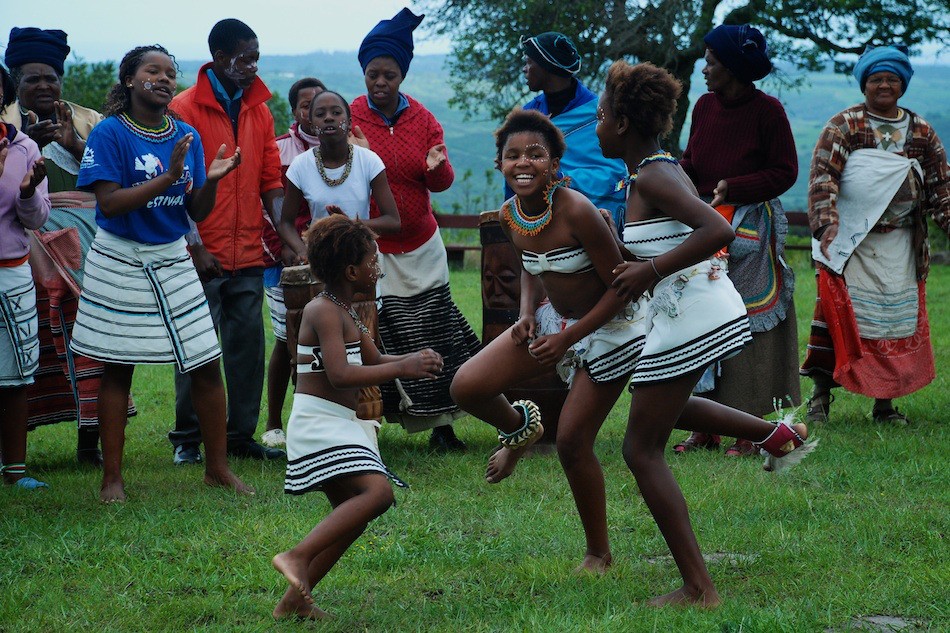Despite the growing influence of western civilization, Xhosa people have remained rooted in the practice of their traditions and dance. Unlike so many Africans that seem ready to abandon their traditions, culture, and general ways of living still remains one of the most vibrant expressions of South Africa’s cultural heritage. Just as their lifestyle, the Xhosa dance remains a powerful expression of traditional values, beliefs, and practices. The various categories of the dances serve as means of communication of the salient elements of the culture.
Traditional practices such as marriages, funerals, harvesting, and initiation are accompanied carry a great part of the people and the essence of their living as a people. Here are some very interesting things you didn’t know about the Xhosa people:
Xhosa Tradition

Such roles revolve around motherhood and other domestic activities. On the other hand, it is possible to discern a demonstration of masculine superiority in the movements of the male dancers. The Xhosa men are traditionally designed to embody power and authority in their social relations. On this score, the dance becomes a powerful model of transmitting traditional values to successive generations.
Xhosa Dance
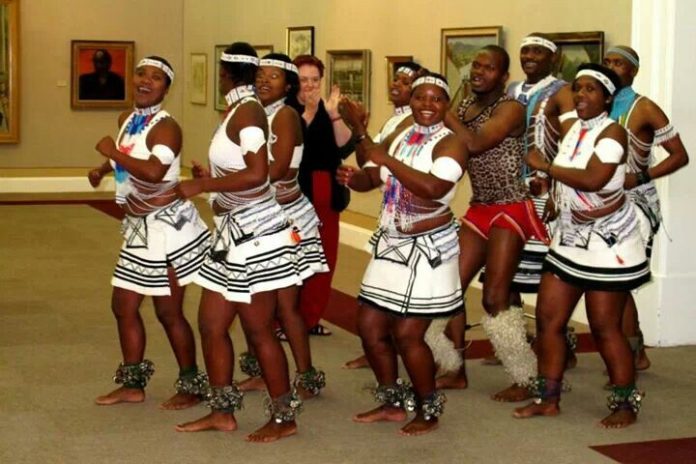
The Xhosa tradition and dance serve the role of connecting generations. The uniformity of the dance and the traditional cadences of the movements and instruments ensure a seamless transition of power from one generation to the next. The world of the living joins the world of the departed and that of the unborn through the constancy in rhythm and continuity of the message. The Xhosa tradition is modelled on the aspect of ancestor worship.
The community believes that the spirit of the dead lurk at every nook of the society to keep watch and offer silent counsel to the living. The community’s dance is one of the ways by which the living converse with the dead and offer their praises to the ancestors. Dancing often takes the form of ritual significance since the community believes that it is indebted to the spirits for the good fortunes encountered.
Xhosa People
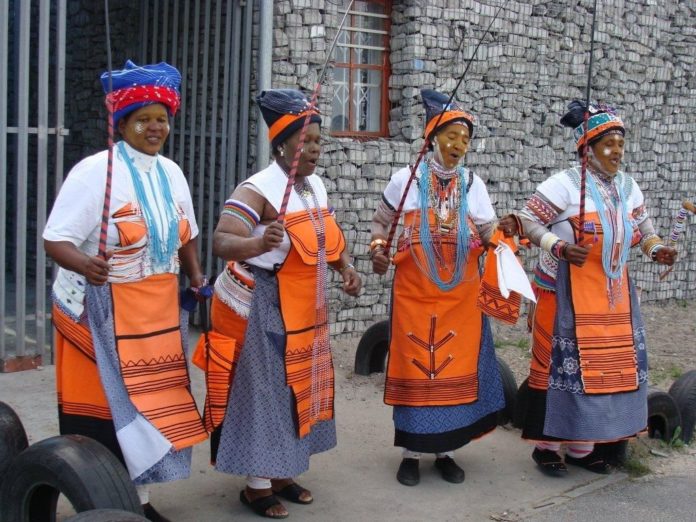
The Xhosa people are amiable and accommodating. Their tradition encourages the adoption of positive attitudes in life. As such, life becomes an act of celebration. This has made song and dance to remain a very important part of the community. The unique patterns of dance also distinguish them from other communities in South Africa. In order for the dancers to enhance this unique traditional identity, the Xhosa traditional clothing such as turbans and sisal skirts are worn while dancing. The levels of energy invested in the dances vary significantly in relation to demographic factors. For instance, elderly women present slow and guarded movements while younger dancers show more rapid rhythms and a higher level of physical activity. Ultimately, the Xhosa dance remains a cherished tradition in South Africa and continues to attract many cultural tourists who visit the country to savour the delights of tradition and other natural beauties.
Xhosa Traditional Marriages
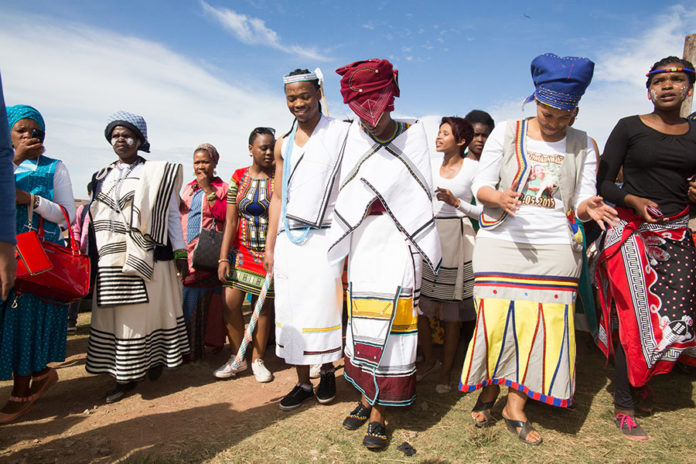
Like many other cultures, the Xhosa people take marriage as a very serious business, most especially the family of the woman getting married. In the earlier times, there is a practice among the people of legally abducting a woman by her suitor and making her his wife. Although it has been misused now to seem as a form of kidnapping, this practice which is referred to as Ukuthwala used to be accepted since it followed some laid down procedures, and she is selected by the man’s family.
More so, after such, the family of the man goes ahead to pay the bride price of the woman involved, Lobola, based on the request of the woman’s family. After this is done, a date is set for the wedding proper, which may take up to three days of celebrations.
Part of the things that must be done during the wedding is to have an animal sacrificed to the ancestors and then goat meat and sour milk are made for the bride who is made to eat. The moment everything is concluded and she joins her husband’s home, she is given a new name.
Xhosa Childbirth
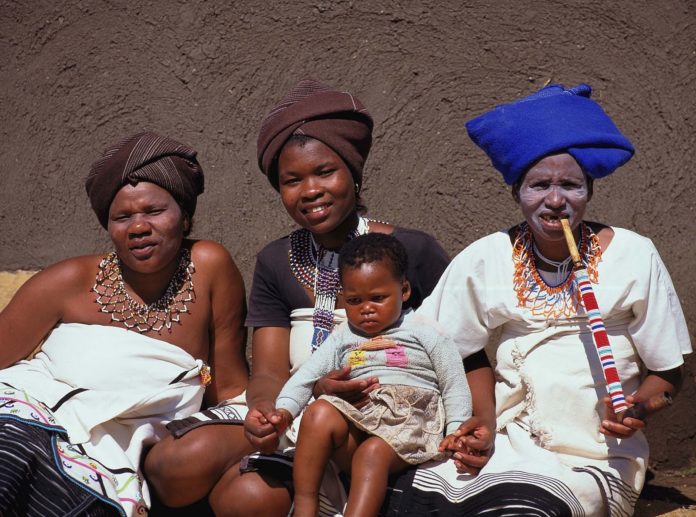
The Xhosa people, like many others, have a special tradition when it comes to childbirth. For a woman who gets pregnant out of wedlock, the family of the man that impregnates her is made to pay for damages before any other thing.
Those to attend to the childbirth in the traditional Xhosa culture are the grandmothers of the child to be birthed. After the birth of the child, the grandmothers keep taking care of the mother and the new-born who will remain in seclusion until after the cord of the baby has fallen off, and then they apply some traditionally made substance to aid in the drying.
It is after this that the baby gets introduced to other members of the family, the women. Different rituals are performed including passing the child through smoke from a fire made from leaves of Sifudu tree. Next, the baby is passed on to its mother who is made to pass it through her left knee then through her right. All these are done in order to fortify the child spiritually against any form of attacks.
After the cord falls off, there is a ritual that is known as the Inkaba. This has to do with the proper burial of the cord in a place that is considered sacred because it is a place where one communicates with the ancestors and spirit world.
A name is later given based on the family name into which the child is born. If it is out of wedlock, however, the child takes the mother’s surname.
Xhosa People – Funeral Rites
After the death of Nelson Mandela and his funeral, a lot of attention has been drawn to the manner in which the Xhosa people bury the dead. The funeral of the people is mostly done on the second Saturday after someone dies.
Relatives from almost everywhere come to mourn, and the house is emptied to provide space for them. On or before the day of the funeral proper, a cow is bought by the elders and prepared specially by the men. The meat is served up completely before any other thing is served.
Children are not always allowed near funeral places, because of the entire rituals that will involve prayers and messages given to the dead to take to the spirit world. Also, it is believed that children get to see something that adults may not want them to.
As the dead person is buried, a walking stick and things to eat are buried with him to aid in his journey beyond. The Xhosas believe that the dead must not be burned.
The mourning then continues for months as decided by the elders and different apparels of black are worn by the women during the time while men wear scarves of the same colour. Once it is all done, it is assumed that the dead has fully become an ancestor, and a cow is killed in celebration.
